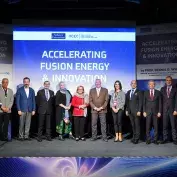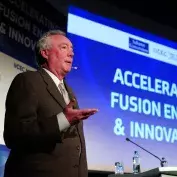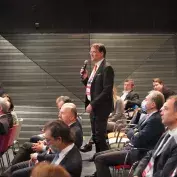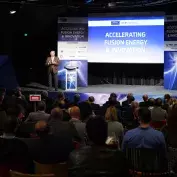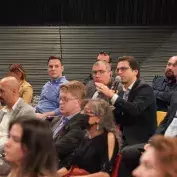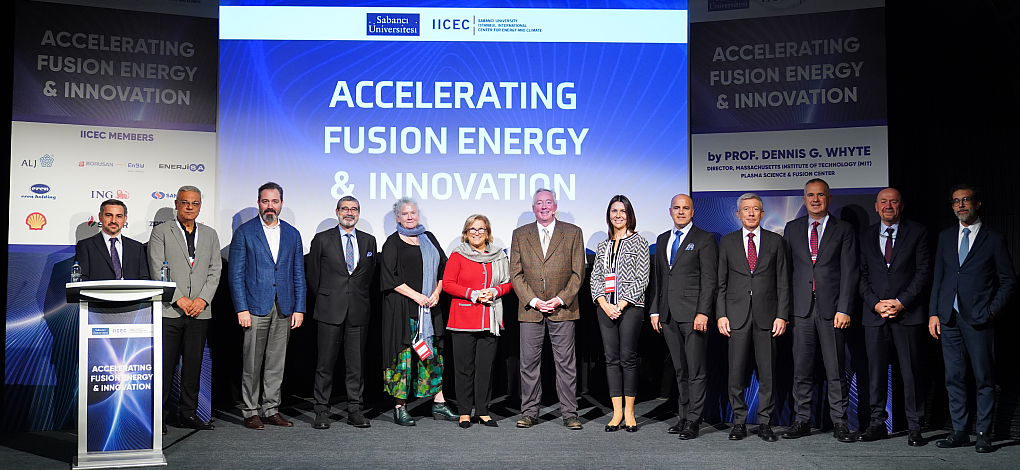
Seminar by Dennis G. Whyte "Accelerating Fusion Energy & Innovation"
Sabancı University Istanbul International Center for Energy and Climate (IICEC) continues to bring the latest developments in energy and climate to Turkey's agenda with its pioneering analytical studies, reports and conferences. Within the scope of the conference series organized by IICEC with the participation of the world's leading people, fusion energy, which has the potential to break new ground in the field of energy, was discussed at this seminar.
Prof. Dennis G. Whyte has announced the calendar in fusion energy at the IICEC seminar in Turkey: “Net energy from fusion will be obtained in 2025, it will be available to the grid in 2030”.
Within the scope of the seminar entitled "Accelerating Fusion Energy and Innovation", Professor Dr. Dennis G. Whyte, Director of the Massachusetts Institute of Technology (MIT) Plasma Science and Fusion Center, and one of the leading figures in the field of plasma science and fusion, visited Turkey upon the special invitation of Güler Sabancı, the founding chair of the Sabancı University Board of Trustees, for a seminar organized by IICEC.
Managing the SPARC fusion project, which is a compact, advanced-technology, fusion energy solution, in collaboration with the private fusion startup Commonwealth Fusion Systems (CFS), a company whose mission is to provide fusion power to the world, Prof. Dr. Dennis G. Whyte talked about fusion energy, which is considered to be one of the most important energy solutions of the future, the latest developments in fusion technology, the success factors of the technology they have developed, and their concrete goals for the near future, at the seminar held at The Seed, Sakıp Sabancı Museum.
A distinguished group of guests from the business world, and energy and climate circles attended the special seminar where Prof. Dr. Dennis G. Whyte was a speaker. In 2018, Prof. Whyte received the Fusion Power Associates (FPA) Leadership Award, which is given to people who have pioneered in this field with highly innovative and much faster methods of producing fusion energy, and who have demonstrated outstanding leadership qualities in accelerating the development of fusion.
“Fusion technology is crucial for a clean energy future”
Sabancı University Founding Chair of the Board of Trustees, Güler Sabancı, who was the host of the event, emphasized that fusion energy technology is crucial for a clean energy future. Güler Sabancı stated that she closely follows fusion energy technology as she is a member of the Massachusetts Institute of Technology (MIT) Energy Initiative Advisory Board. Güler Sabancı expressed that she was glad the studies in this field were presented by Prof. Dr. Dennis G. Whyte, one of the world's leading scientists in this field, at an event hosted by IICEC.
“We are making the first promotion of fusion technology in Turkey”
In his speech at the seminar, Prof. Dr. Yusuf Leblebici, Sabancı University President, said, “As Sabancı University, we are promoting a very innovative technology in Turkey together with the Energy Initiative of the Massachusetts Institute of Technology, one of the world's leading universities. The fusion technology that Prof. Dennis Whyte presents to us has the potential to radically change the energy and development of humanity in the coming centuries. It shows that a result that has been talked about for at least 50-60 years but could not be achieved is now very close to us. The relationship established with Sabancı University Istanbul International Center for Energy and Climate (IICEC) and MIT Energy Initiative has been continuing for years. I can say that it is the result of years of experience rather than being a new step for Sabancı University. Here, we also see what an important role the IICEC plays. We are happy to host an important person of the scientific world at the IICEC event and to be involved in the next studies”.
“Net energy from fusion will be obtained in 2025, it will be available to the grid in 2030”
“Given the current situation and global developments, fusion is much closer than we previously thought. This means that we urgently need to develop technologies that highlight fusion as a commercial, viable energy solution to combat climate change and for energy security. Before our breakthrough inventions, fusion was expected to occur many years later. Now there are only four years to fusion. This also presents us with an important opportunity to apply this new energy source,” said MIT Plasma Science and Fusion Center Director Prof. Dr. Dennis G. Whyte. He shared the following comments about the importance of fusion and their studies:
“Governments, research institutions, scientists, the business world and private investors need to come together for fusion technology to truly materialize. It is important to transform the scientific development principles created by decades of public funding into innovative technical and organizational models. A great example of this is the recent emergence of the private fusion industry, with companies focusing on solutions to shorten the development time of fusion and produce an economically competitive product.
We, as MIT and its private sector partner, Commonwealth Fusion Systems, are realizing an important example of it. This plan brings the disruptive technology in superconducting magnets and the deep-rooted science of fusion to life with innovative collaboration models comprising scientists, academia, business, and investors to make a significant difference in tackling climate change.
“In the project we run at MIT, fusion energy is delivered to the grid and put into use in 4 phases. We performed the first phase, Alcator C-Mod, and completed the TFMC spiral phase in the second phase. We got a positive result from the test results we carried out on September 5, 2021. Now, in the third phase, SPARC facilities near Boston will be completed and put into service in 2025 to generate net energy directly. Finally, with the ARC phase, we aim to make fusion energy available to the grid.
“There are no longer periods of 20-30 years. We are talking about 2-3 years later. The old rules no longer apply. Now we are talking about a new horizon and the near future. Maybe we will talk about fusion energy in a very different way in the next 10 years. In this way, we will overcome many energy problems”.
“Competitive fusion could provide invaluable gains for net importer energy markets like Turkey”
Stating that IICEC continues to contribute to a safer and cleaner energy future with the public-industry-academia success triangle model, IICEC Director Bora Şekip Güray stated that fusion technology has recently come increasingly to the fore in studies on a safer and cleaner energy future. Stating that as Sabancı University IICEC, they are very pleased to host Professor Whyte, Director of the MIT Plasma Science and Fusion Center, who has signed a leading project with the technological solutions he has developed in this field, Güray said that the developments to be achieved in sustainable fusion solutions will be critical for the energy and climate future. As far as the fields of energy security, combating climate change and energy economy are concerned, Güray drew attention to the potential of fusion to transform global energy balances among all these factors, and stated that competitive fusion can also provide invaluable gains in the future for energy markets such as Turkey with growing energy demand and being a net importer of energy.
